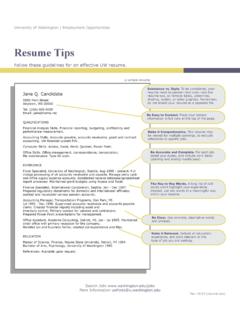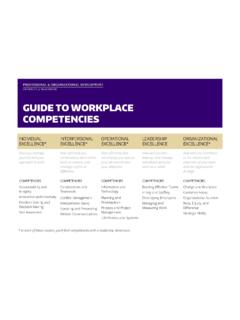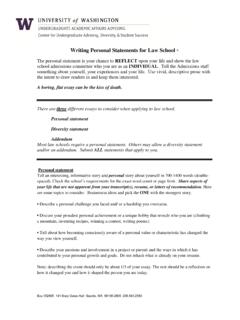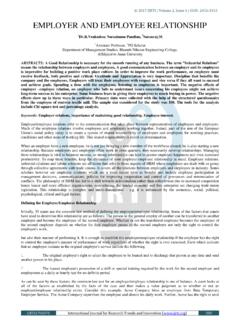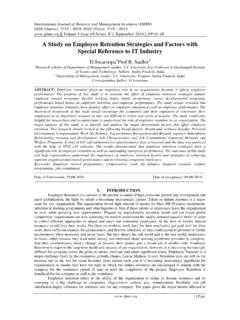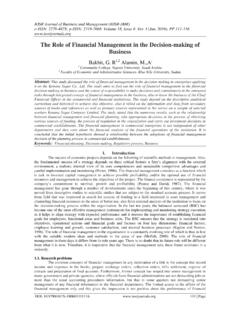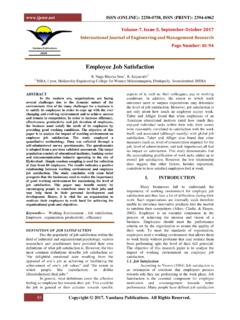Transcription of What is Employee Involvement? by Robert Bullock, Scontrino …
1 UNIVERSITY CONSULTING ALLIANCE CONSULTANT PROFILE UW Human Resources PROFESSIONAL -&- ORGANIZATIONAL DEVELOPMENT What is Employee Involvement? by Robert Bullock, Scontrino -PowellDepending on your background or specialty, you may refer to it as engagement, voice, participation , democracy, etc. No matter what you call it, the concept of Employee voice has been a topic of consideration for centuries. Even ancient Romans understood the value of having direct participation in matters of business and state. Organizations are still realizing the importance of Employee involvement in every type and level of work. So what exactly is Employee involvement and how can organizations benefit from it? Employee involvement can be defined as: The direct participation of staff to help an organization fulfill its mission and meet its objectives by applying their own ideas, expertise, and efforts towards solving problems and making decisions.
2 From this definition, participation can include representative participation , direct communication, and upward problem solving. We will focus on the latter two categories because this article is more about understanding outcomes, tools, and methods. Outcomes of Employee Involvement Providing opportunities for active participation is beneficial for individuals as well as entire organizations. Applied organizational researchers have identified a myriad of positive outcomes of Employee involvement initiatives. The list below shows just how much of an impact that Employee participation and voice can have on the performance and well-being of a person, team, department, or entire organization. Improved organizational decision - making capability (Apostolou, 2000) Improved attitude regarding work (Leana, Ahlbrandt, & Murrell, 1992) Substantially improved Employee well-being (Freeman & Kleiner, 2005) Reduced costs through elimination of waste and reduced product cycle times (Apostolou, 2000) Empowerment, job satisfaction, creativity, commitment, and motivation, as well as intent to stay (Apostolou, 2000; Light, 2004) Increased Employee productivity across industries (Jones, Kalmi, & Kauhanen, 2010) How to Get Employee Involvement In order for an Employee involvement process to be effective, three things need to be present: 1.
3 Employees need to be given the authority to participate in substantive decisions 2. Employees need to have training or experience with appropriate decision - making skills 3. Incentives to participate (either implicit or explicit) must be present Formal interventions usually involve manager and staff training, buy-in and vocal support from the highest levels, and the application of specific measures to increase Employee participation . Examples of specific measures include: self-directed/self-managed work teams, problem solving teams, and cross-functional task-forces (to name a few). However, if you would like to start encouraging Employee involvement in your organization right now, try following these steps: (1) Give a brief survey to your staff that is made up of open-ended questions that ask for specific improvement ideas, (2) review every response, (3) communicate the results with all of your staff, and (4) create a team to implement the easiest ideas that can have the greatest positive impact (see this chart as an easy template to organize ideas).
4 Here are a couple of survey questions to get you started: If you were in charge, what steps would you take to make our organization even better? What are two actions we can take to improve our services? One last note: surveys always have a caveat. If you are not ready to act on what your employees tell you, reconsider conducting a survey. Organizations are often better off not asking for Employee ideas and/or feedback than asking and not communicating and acting on results. Contact the Alliance at 206-616-8461 OR
